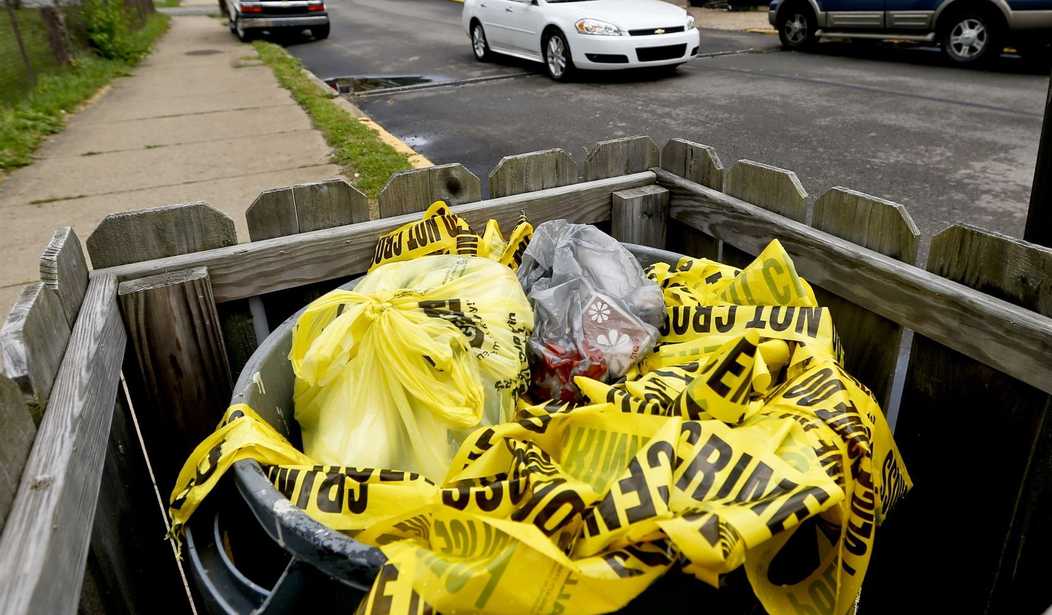Today’s Washington Post has the grim details about a surge in youth violence in our nation’s capital. Gun violence amongst young people stands at an all-time high. In fact, 16 juveniles have been killed in Washington D.C. in 2022, double the number from last year, with 82 shot and injured. And the numbers across the country are staggering, with some estimating that 5,800 young people have been injured or killed by gunfire this year. That number has increased each year of the pandemic.
While that number should shock and horrify, driving local and state leaders into action, as the article indicates, the leaders in Washington D.C. are perplexed as to reasons for the increase. Let’s help them analyze the situation.
What’s really going on in D.C.? The same thing that is happening in other large cities in states that emphasized draconian lockdown measures and fomented the defund the police nonsense. The impacts of keeping kids out of school and locked down are being manifest in rising criminality and violence coupled with the hamstringing of law enforcement trying to do their job of protecting residents.
As if on queue, the Washington Post chimes in, “[e]xperts have attributed the increase in juveniles shot and shooting, in part, to two factors: pandemic-related trauma, and the proliferation of guns in the city and beyond,” without giving much concrete evidence of the latter. Of course, city officials blame a “proliferation of guns”, but it’s important to remember that D.C. has some of the strictest gun laws on the books, so while blaming guns is a convenient political scapegoat, it can’t be the source of the increase in violence. For the Washington Post to simply accept that argument on its face, says more about the current state of journalism and its lack of curiosity than it does the actual numbers of firearms on the streets of D.C. More on that in a moment.
So let’s dig into the the trauma caused by the pandemic lockdowns. We know that the academic performance of students that remained outside of the classroom during the pandemic suffered. As the article indicates, “[a]n analysis of test scores from across the country found that the average student lost more than half a school year of learning in math and nearly a quarter of a school year in reading throughout the pandemic.” Kids across the country watched family members fall ill or perish, parents lose jobs, conflicting COVID information passed around, as well as the general stress and anxiety associated with the pandemic. It had an impact and not a positive one.
As for defunding and crippling law enforcement, the Washington Post reports, “[t]here have been fewer juveniles arrested for violent incidents so far this year compared to the same time the year before the pandemic, but the number has increased by 15 percent compared to the same time last year [2021], according to police data through Nov. 7.” According to the city’s police chief, [a]lmost half of those juveniles were first-time offenders”, which he called “staggering”. So why don’t youth take the criminal justice system seriously? They don’t have to.
The maximum sentence for a juvenile in D.C. is commitment to the Department of Youth Rehabilitative Services until age 21, but it’s unlikely a youth will even receive that slap on wrist. Even when law enforcement does their job, the juvenile justice system ignores the often violent behavior and sends them back into to community to repeat offend.
Data provided by D.C. Courts provides some insight into how the city’s criminal justice system has treated its youth this year, a process that is opaque because of strict juvenile confidentiality laws. Prosecutors moved forward in 83 percent of cases filed between Jan. 1 and Dec. 1; the rest were dropped for lack of evidence or other reasons.
Of the roughly 300 cases that made their way through the courts, more than half were dismissed — which could mean youth completed diversion programs or deferred sentencing agreements by the attorney general’s office. In the remaining cases, youths were committed to the Department of Youth Rehabilitation Services about half of the time, and given probation the other half.
According to D.C. Director of Gun Violence Prevention Linda Harllee Harper, “If you’re 14 years old and you get an attorney assigned to you and you’re walking into court with your attorney, how that feels is kind of movie-like. And then you get off and everybody’s high-fiving, and everyone may know that you actually did it but you got off.” Well no wonder they don’t take the juvenile justice system seriously–they know they are unlikely to be even be convicted of a crime not to mention find themselves in detention or rehabilitation.
So, can we help the leaders in D.C. solve this? Sure, it’s quite simple. The damage from the pandemic is done, but lessons about lockdowns must be learned and policies must be changed. It’s long past time for city leaders to take juvenile crime seriously and ensure that appropriate punishments, including jail time for the most violent youth, are meted to those convicted. Simply ignoring the issue shows the youth of our cities that there are no consequences for criminal behavior; a lesson they take with them into adulthood.







Join the conversation as a VIP Member